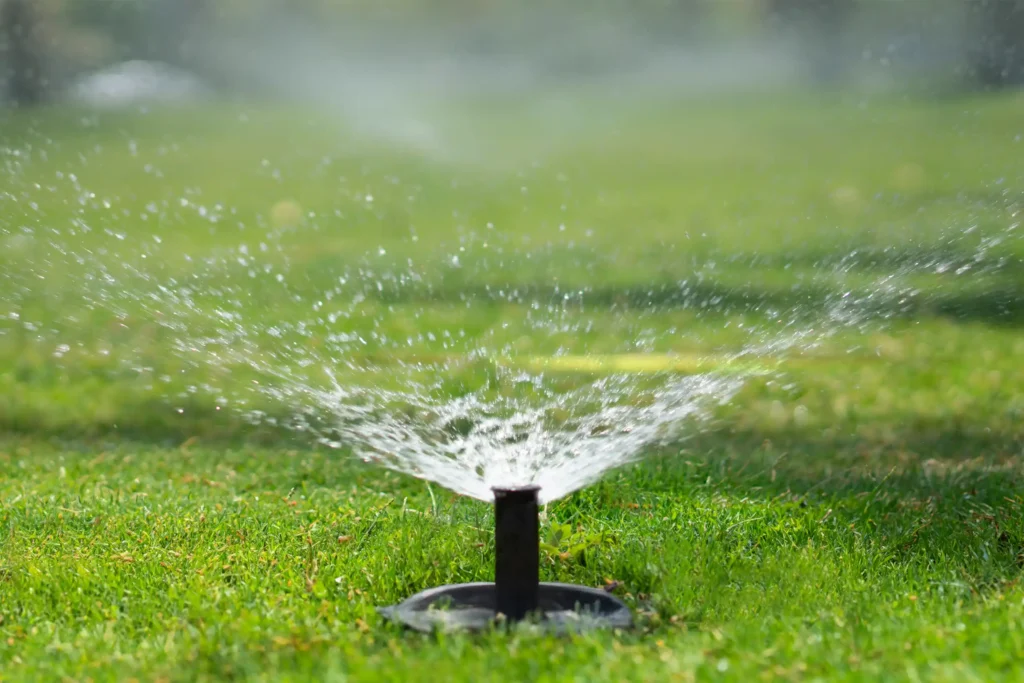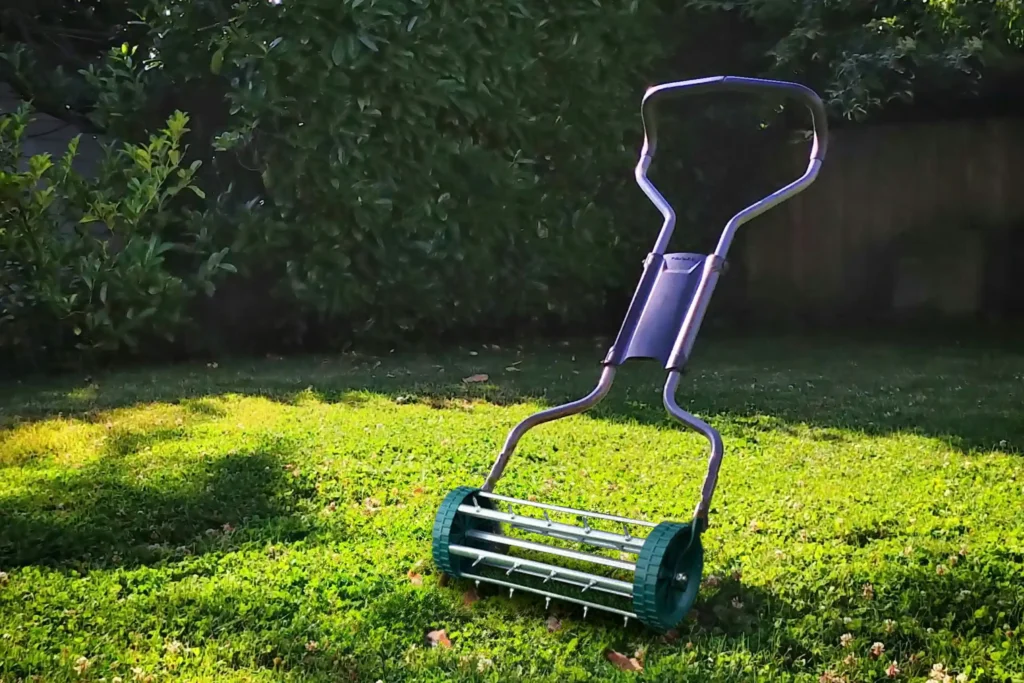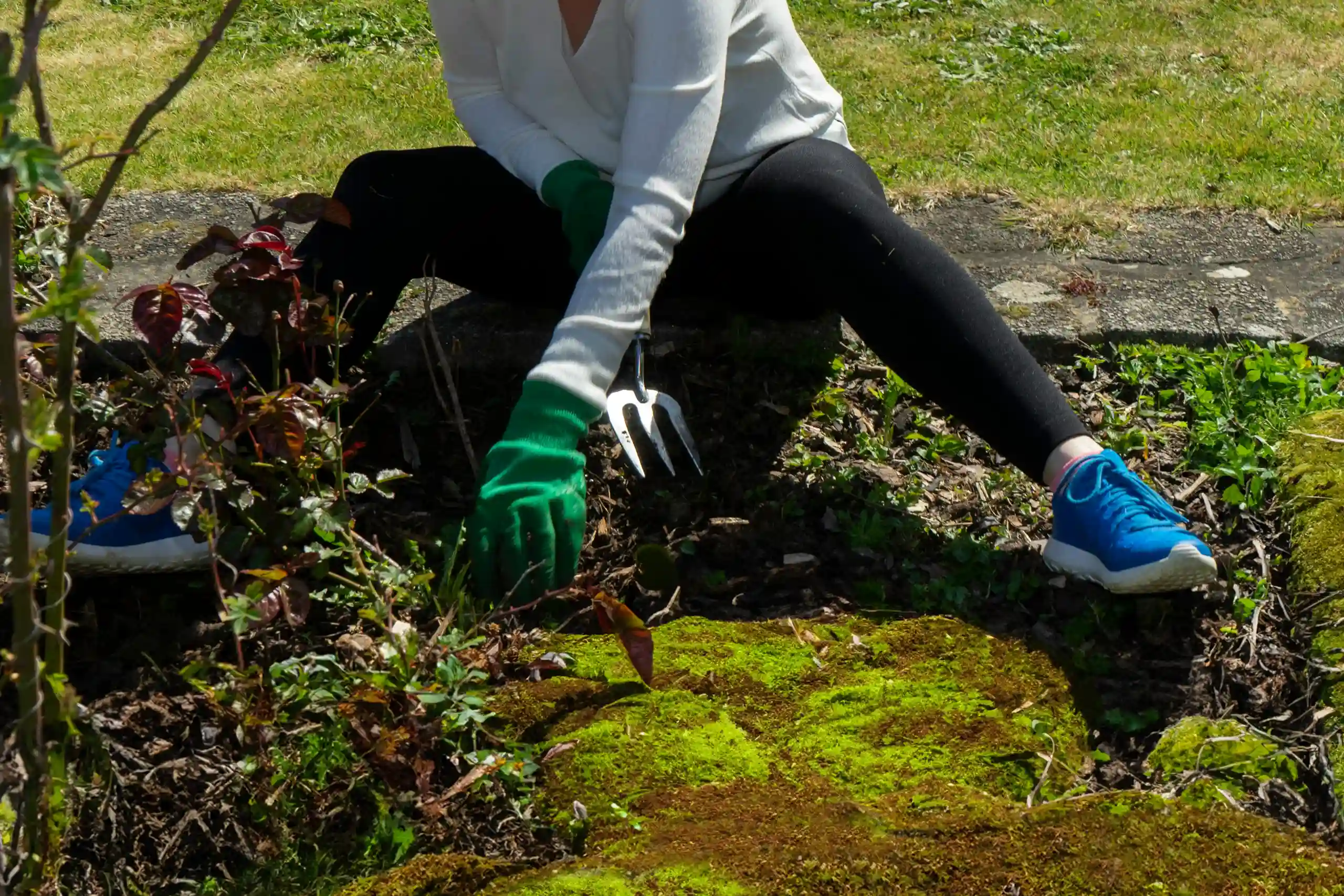Whether you are a seasoned gardener or new to the world of lawn care, you will no doubt recognise the challenge moss can pose to a healthy lawn.
Moss is a common lawn issue for many homeowners. If left untreated, it can quickly spread and become a larger problem.
However, you can easily remove this pest with our high-quality Weed Wipeout treatment and restore your lawn to full health.
Continue reading our guide to understand why moss grows, how you can choose the best moss killer, and how you can apply it effectively…
What is moss caused by?
Much like fungi, moss thrives in damp and shaded environments where other plants may struggle to grow.
Over time, moss will form dense patches that compete with your grass for nutrients, air, and water.
Further causes of moss growth include:
- Acidic soil. Moss favours soil that has a low pH level.
- Compacted soil. Creates the ideal conditions for moss to grow.
- Excessive shade. Shaded areas can prevent grass from growing and are ideal areas for moss to develop.
- Poor drainage. These areas retain excessive moisture, creating the perfect environment for moss.
- Thin or bare areas. If your lawn is suffering from thin or bare patches, these exposed spots offer the ideal place for moss to take root.
Luckily, many of these causes can easily be addressed by providing regular lawn care maintenance.
What is the best way to get rid of moss?
The best way to get rid of moss depends on a few different factors, such as:
- The extent of the moss
- Your lawn’s current health
- The weather and climate
If you have recently discovered moss in your garden and it is moderate, you may be able to remove it without the need for chemicals.
However, if your lawn problem is on a larger scale, you may need to consider tackling it with a specially formulated moss killer.
How to remove moss naturally
To remove moss naturally from your lawn, follow the below steps:
Improve light exposure. Trim low-hanging branches, bushes, and tree crowns.
Conduct a soil analysis. This will determine if it has a low pH. If your soil is too acidic, you should apply lime to raise the pH level and increase soil fertility.
Scarify your lawn. Use a rake or electric scarifier to break up the layers of thatch and moss that are hindering your lawn’s growth.
Aerate the soil. You will improve your lawn’s health with aeration. It helps to improve drainage and absorption of nutrients, air, and water.
Consider overseeding. After you have successfully removed moss naturally, you may want to overseed any thin or bare patches to promote growth. This will allow your grass to actively compete with moss and prevent it from taking root.
Types of moss killer for lawns
Now that you are aware of the factors you need to consider before treating your lawn, it is time to delve into your options.
It is important to be aware that moss is not only limited to your lawn, but it can also grow on roofs and driveways.
To help you decide which is the best moss killer for you, here is a breakdown of the main types and their uses:
Organic moss killers
Organic formulas are often favoured by those who are seeking an eco-friendly solution to their problem.
These moss killers often contain natural ingredients like citric acid, vinegar, or soap products, making them safe for pets and children.
In addition, organic moss killers are also less harmful to surrounding plants, reducing the chance of any unnecessary damage.
| How does it work? Organic moss killers work by dehydrating and then digesting the moss, breaking it down while simultaneously feeding your lawn. They are ideally suited to those whose gardens are being affected by light to moderate moss infestations. |
Chemical moss killers
If your lawn is suffering from a more widespread lawn infestation, then you may want to consider using a chemical-based moss killer.
These types of moss killers often contain iron, copper, or ammonium sulphate, which effectively break down moss.
| How does it work? Chemical products containing iron sulphate will add iron to the soil, which is toxic to moss, causing it to dry out and die. On the other hand, products containing potassium salts will make the soil less acidic, which makes it more difficult for moss to thrive. Essentially, chemical moss killers are the perfect option for tough moss infestations and where quick results are needed. However, it is important to be aware that these products require careful application, and lawn access may need to be limited for pets and children. |
How to choose the best moss killer for your lawn

Choosing the right moss treatment for your lawn is essential for tackling the problem effectively without causing unnecessary damage to your grass.
Here is what you should consider when choosing the best moss treatment for your garden:
- Decide on chemical or organic. Chemical products, often containing ferrous sulphate, generally work quickly and are extremely effective on moss. Organic and natural moss killers usually take longer to work but are gentler and safer for your children and pets.
- Choose a lawn-safe formula. Ideally, you want to choose a formula that targets moss without causing harm to your grass. Look for lawn-safe products that contain iron, as these not only kill moss but also act as fertiliser to nourish your turf.
- Consider additional benefits. It is always worth checking the additional benefits that some moss killers provide. For example, some products improve soil health while others provide residual action and work overtime to prevent moss from returning.
- Factor in effectiveness. Before choosing a moss treatment, you need to consider the severity of the issue and your timeframe for seeing results.
- Think about application type. Moss killers are available in liquid, granular, and spray forms. Liquid moss killers are better for targeted applications on small patches or dense moss areas. Granular moss treatments are ideal for larger lawns, which require broader coverage.
Without the correct treatment, moss will quickly spread and lead to a patchy and unhealthy lawn.
What time of year to apply moss killer?
Much like when overseeding or aerating, timing is key when applying a moss killer to your lawn.
Ideally, you want to apply a treatment when moss is actively growing, as it will be more responsive to treatment.
The best times of year to do this are generally early spring or autumn.
In spring (March to April), moisture levels are usually high and temperatures are cool, creating the perfect environment for moss to thrive.
In addition, this is also the time when grass is starting to grow, making it the ideal time to treat moss before it spreads further.
Homeowners will often apply a moss treatment to their lawns in spring, as this allows new grass to fill in any patches, creating an established and resilient turf for summer.
Do not worry if you miss this window of opportunity, as early autumn (September to October) is also an optimal time for applying moss killer.
Early autumn brings cool temperatures and more rainfall, both of which contribute to moss growth.
Treating your lawn in autumn can help prevent moss from spreading throughout the winter months while also ensuring it has a healthy start come spring.
When should I not apply lawn moss killer?
Knowing when you should not apply moss treatment to your lawn is just as important as knowing when the best time is to do it.
You will want to avoid using moss killer in the summer months, as the hot and dry conditions cause moss growth to slow down, making it less responsive to treatment.
In addition, if you are using a chemical moss killer, this, along with the heat and lack of rainfall, can result in unnecessary stress and damage to your lawn.
Similarly, you should avoid using moss treatments in the winter months, as cold weather will limit the effectiveness of moss killer.
How to apply moss killer to your lawn
You have done your research, chosen your moss treatment, and now it is time to put everything you have learnt into practice.
Applying moss killer correctly is essential for removing moss while maintaining your lawn’s health.
Carry out the following steps to successfully treat your lawn:
- Prepare your lawn. Mow your grass to a height of approximately 2 to 3 cm, as this helps expose moss and allows the treatment to make contact more effectively.
- Scarify thick moss. If the moss is very thick, you should scarify it first to break up the dense layers of material.
- Read the instructions. It may seem obvious, but take the time to carefully read the instructions. Manufacturers will usually add their recommendations for mixing ratios and amounts so you can avoid over or under-application.
- Prepare the solution. If you are using a liquid moss killer, you will want to mix the solution as instructed in a garden sprayer or watering can. However, if you are using a granular treatment, you can measure this based on the square footage of your garden.
- Apply the moss killer. Liquid moss treatments are best applied using a fine spray nozzle for even distribution, while granular moss killers may require a manual spreader.
- Even distribution. If you are using a chemical moss killer, it is important to ensure the treatment has been evenly applied to the whole lawn and not just the affected areas, as this may cause your lawn to grow back thin, patchy, and discoloured.
- Lightly water (if recommended). Some granular treatments do require light watering after application to activate the formula. You will usually find this information within the product instructions.
- Wait and monitor. Make sure you give the moss killer time to work. Generally, treatments take one to two weeks to show visible results. Once the product has taken effect, you will notice the moss turning black as it dies.
- Scarify dead moss. Once the moss has been successfully treated, you can scarify your lawn again to remove the dead material, which will allow nutrients and air to reach your grass.
Once you have successfully applied moss treatment to your garden, you can start providing your lawn with the appropriate aftercare.
How can I prevent moss from returning?

There are over 700 species of moss in the UK alone, so it is no surprise that it is one of the most common issues gardeners are faced with.
To prevent moss from returning and wreaking havoc on your turf, it is important to maintain good lawn management.
Here are our top tips for caring for your lawn after applying moss killer:
- Aerate your lawn. Following the removal of dead moss, you should aerate your lawn, as this will help air, water, and nutrients reach your grass.
- Regularly test your soil’s pH. Moss thrives in soil that is acidic and has a lower pH. To reduce the chances of moss returning, you will want to ensure your soil has a pH between 6.0 and 7.0.
- Overseed bare patches. It is not uncommon to find bare patches on your lawn after treating moss. However, these can easily be rectified by overseeding with our specialised grass seed, which promotes thicker grass growth that is more resilient to moss.
- Tailor your mix. Lawns exposed to a lot of shade will be more prone to moss than those that are not. To prevent moss from sprouting, you can use our high-quality Shade Support Grass Seed Mix formulated to promote grass growth in the shade.
- Mow regularly. Adjust your mowing regime and ensure that you are mowing regularly. However, you must ensure that you do not cut the grass too short, as this can leave areas exposed, creating space for moss.
- Apply fertiliser. Feeding your lawn regularly allows it to become more resilient against pests like moss. Our expertly blended Perfect Prep Fertiliser encourages rapid germination and thick and healthy growth.
Creating a consistent lawn care routine is key to maintaining a lush and healthy lawn that naturally resists moss.
Without regular maintenance, your lawn is more at risk of issues like moss growth, weed infestations, bare patches, and thatch build-up.
Ready to restore your lawn back to full health?
It is important to remember that wherever moss is thriving, grass is struggling.
Although moss can often be seen as a nuisance, it can be a useful indicator of underlying lawn issues, such as soil compaction or imbalanced pH levels.
Removing moss from your lawn does not have to be complicated, and it all lies in choosing the right moss treatment, timing, and maintaining regular lawn care.
Kickstart your lawn’s journey back to health today by taking our quiz to find out the best products for your lawn.
